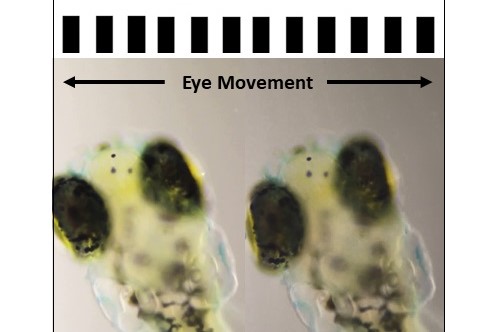Vitamin A recycling and vision
An international, collaborative study reveals new insights into how our eyes use vitamin A for all day vision, offering a steppingstone to understanding the processes involved in inherited vision loss.
The study, led by University College Dublin (UCD) Conway Institute, investigated vitamin A recycling and daylight vision by cone photoreceptors, using a drug called Emixustat, currently in phase 3 clinical trial for Stargardt disease, a juvenile form of inherited vision loss.
To see the outside world, the type of vitamin A we eat in our diet switches from an inactive (light-insensitive) to an active (light-sensitive) form in our eyes. “This switch needs to be tightly controlled as too little of the active type or too much of the inactive type of Vitamin A can lead to inherited or age-related forms of blindness,” said researchers, led by Professor Breandán Kennedy.
Using zebrafish, as their eyes are similar to humans, Emixustat was used to block the activity of a protein called RPE65, which switches inactive dietary vitamin A to active light sensitive vitamin A.
"Our study found that zebrafish administered with the drug had poorer vision immediately after being removed from night-time darkness. They also had less light-sensitive vitamin A,” said PhD researcher Rebecca Ward. “This means that when we are in darkness, RPE65 protein is important to make the light-sensitive vitamin A, so our eyes can see when moving to a well-lit environment."
These findings impact our understanding of inherited childhood blindness, added Ward, as changes in the gene that makes RPE65 protein are linked to rapidly progressing forms of inherited childhood blindness and, in these conditions, the death of rod and/or cone cells can occur due to inadequate levels of light-sensitive vitamin A.
The researchers were also able to show that a chemically synthesised form of vitamin A (9-cis-retinaldehye) could restore vision in the zebrafish by bypassing the blockade of RPE65.
Commenting on the findings, Prof Kennedy said; “A puzzle for vision researchers is to understand how cone photoreceptors continuously recharge with light-sensitive vitamin A during daylight conditions. Surprisingly, we discovered that if the zebrafish with impaired vision due to Emixustat treatment, were exposed to light for 30mins or longer, they regained full vision. “This indicates that RPE65 is required at night to provide light-sensitive vitamin A for vision in the morning. But, during the day, RPE65 is not required, and the eye uses light to regenerate the light-sensitive vitamin A; a clever, efficient solution”.
The study was published by The Journal of Biological Chemistry.


























